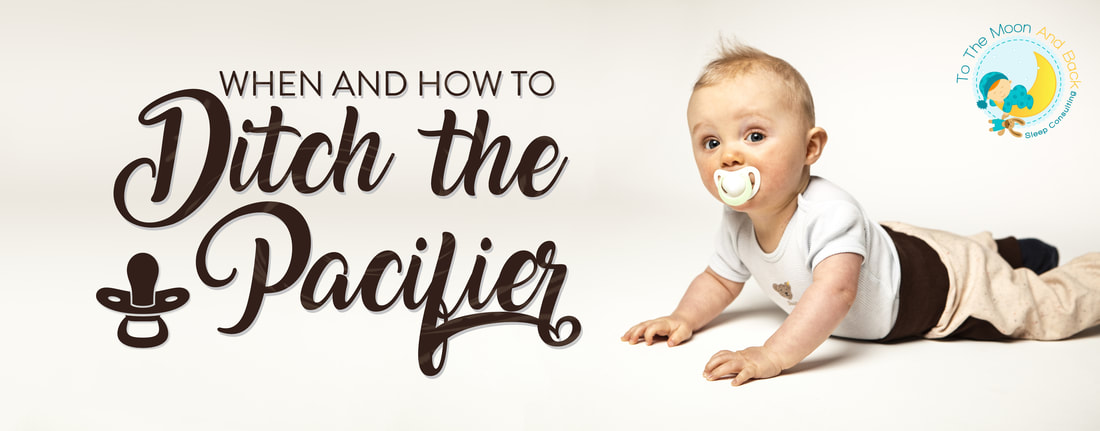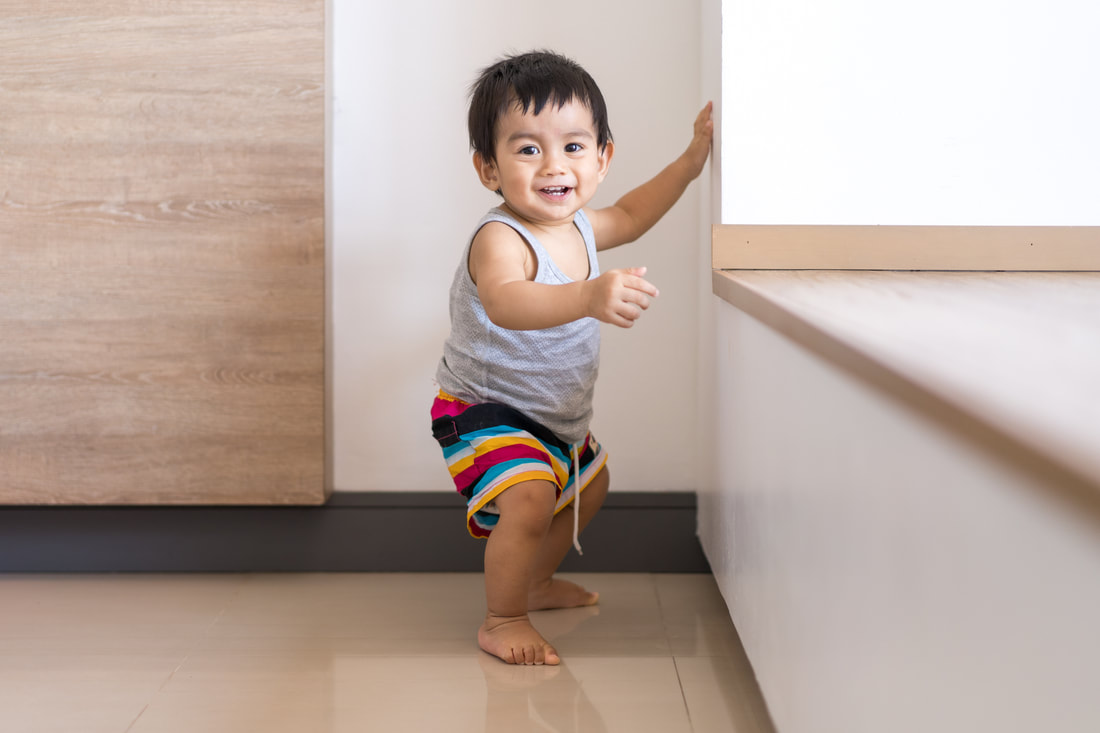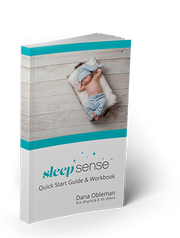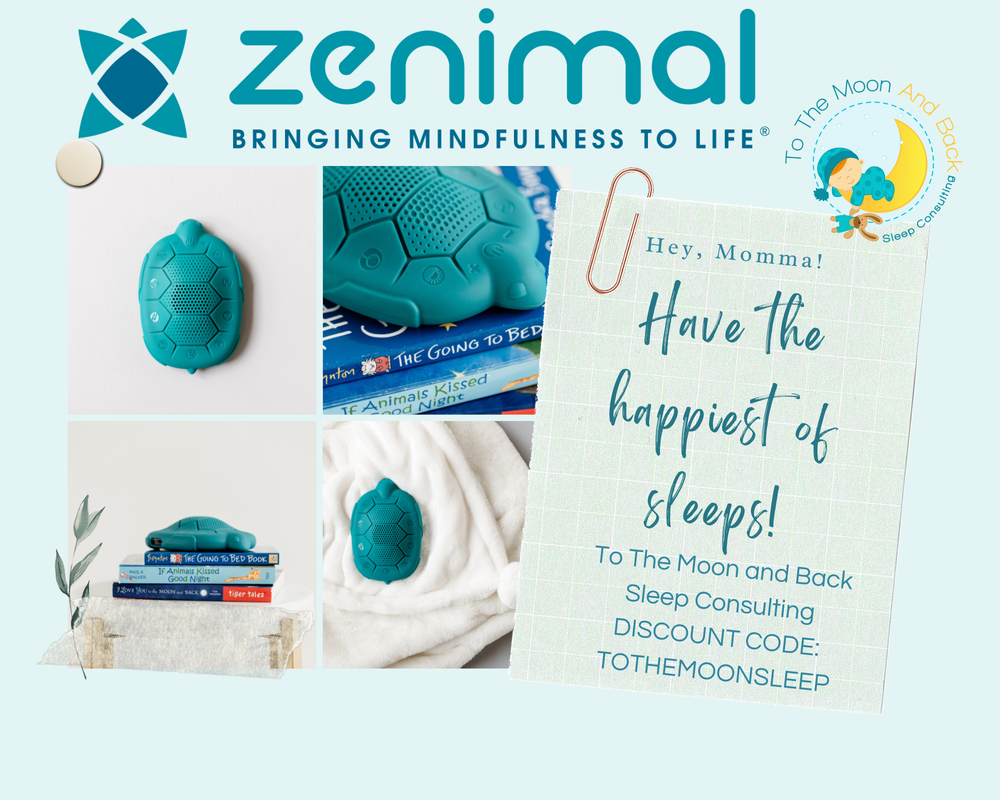|
Before I get rolling here, let me say that I am not anti-pacifier. I mean, what mother could be? We’ve all been saved from a major baby meltdown by the quick introduction of a dummy into a baby’s mouth at the right moment. Maybe they missed their sleep window by a little bit and were getting a bit cranky; perhaps they got an unexpected bump on the head, or you had to swoop in and take the dog treat out of their mouth. Just before they go into a tantrum, in goes the pacifier, and like magic, all is well. Pacifiers have benefits beyond preventing tantrums, as well. The AAP found that pacifiers can reduce the risk of SIDS, possibly due to the fact that baby has a more challenging time burying their face into soft bedding if they have a pacifier sticking out of their mouth. So, given that very substantial and necessary consideration, I’m making the following recommendations based on the supposition that your baby is over a year old. That doesn’t mean this is irrelevant if your little one’s younger than that, but just make sure you’ve carefully considered the pros and cons of taking away the pacifier before you make a decision. So here’s the conundrum from a sleep expert’s point of view: pacifiers can become a problem when it comes to sleep. If a baby’s accustomed to falling asleep with a pacifier in, it almost always wakes up in the night after it’s fallen out. It kicks up a fuss until mom gets up, finds it, and pops it back in its mouth. So, first off, let’s look at why babies can’t just fall asleep with a pacifier in and then peacefully sleep through the night. Then, we can look at some strategies for getting rid of the pacifier if you and your baby are ready to take the plunge. Sleep, for babies and adults alike, comes in cycles. Many of us are under the assumption that we fall asleep at the start of the night, go into a deeper sleep as the night goes on, and then gradually come out of it as the morning rolls around. It’s true that we go from light sleep to deep sleep and then back again, but it happens several times a night, depending on how long you sleep. For adults, a full cycle typically takes between 90 and 120 minutes. For a baby, it’s closer to 50. Suppose your baby won’t sleep at bedtime without a pacifier in their mouth. In that case, there’s a distinct possibility that they rely on that pacifier to sleep. When they get to the end of a sleep cycle, they get into that very light stage of sleep and might actually wake up, at which point they’re still tired, but they might have trouble getting back to sleep because “Hey! Where’s the pacifier? I can’t get to sleep without my pacifier!” Suppose they can’t find it or haven’t figured out how to put it in on their own yet. In that case, they’re going to get upset because they can’t get back to sleep, and they’re going to start crying for someone to come and rectify the situation. And that, right there, is the definition of what we in the sleep consulting field call a “sleep prop.” Sometimes, it’s feeding, sometimes it’s rocking, and sometimes it’s some crazy combination of a bunch of things, but essentially, it’s something that babies depend on to get to sleep that they can’t provide on their own when they wake up in the night. More than anything, that’s the secret to sleeping through the night. Getting rid of sleep props is, hands down, the most critical component to getting your little one sleeping peacefully from the time you put them to bed until they wake up, happy and refreshed, in the morning. So, if you’re reading this and thinking, “That’s IT! That’s exactly what’s happening with my baby!” you’ll probably want to take steps to get rid of that pacifier. I have a few tips to get you through the process quickly and peacefully. When it comes to breaking bad habits, I’m a cold turkey advocate, and this situation is no different. Toddlers do better with absolutes than with moderation, so my advice to parents is almost always to pick a day to make the change, explain it to your little one, and then toss all the pacifiers into the trash. Toddlers can often adjust to new situations remarkably easily so long as things are clear and consistent. So don’t save one for emergencies or just-in-case scenarios. It will be too easy for you to fall back on the pacifier to get a quick solution if your baby is having trouble sleeping. Then you’ll just be causing confusion. Alright, you’ve made the decision, explained the situation to your toddler, and signed a mental contract with yourself that you’re not going to do it by half measures. You’re ready to go all in. What’s next? Now’s the time to flex those creative muscles and devise a plan. How are you going to spin this change in a positive way? Toddlers typically embrace the idea of growing into “big kids,” so marking it as a milestone can be a big help. Make sure to present the change as a very exciting and joyous occasion. This is a bit of a dirty parenting trick. Still, you could round this off by introducing a “Pacifier Fairy,’ by telling your toddler that the Pacifier Fairy is coming to collect all of their dummies and, in exchange, will leave them a special surprise. Whether that’s something your little one will embrace, I leave it up to your discretion.  One quick side note here: I’ve seen a lot of situations where parents with a toddler and a newborn or younger sibling in the house will give the older baby’s pacifiers to the younger one. On its face, this seems like a good idea, but it can breed some resentment from your toddler when they see their younger sibling sucking on their pacifier. If you can, get rid of your toddler’s pacifiers and get different ones for the younger child. So, you’ve laid the groundwork, your little one has grasped what’s going on, and the house is now pacifier-free. Now, you’ll want to brace yourself because, in about 99% of all cases, your toddler will go a little bit bananas while they adjust to the new reality. It’s nothing to be concerned about; we all get a little irritable when we break a habit, but I want you to know that it’s rarely a seamless transition. There’s going to be some pushback. When that pushback hits, and your toddler starts to lose it a little, my advice is to distract, distract, distract. Keep some of their favourite treats on standby, have the iPad cartoons ready, and quickly turn their attention to something else when they start to fuss about the lack of a pacifier. You can acknowledge their frustration and offer them as much comfort and support as needed but don’t apologize or give in. Remember that you’re the authority figure here. If you’ve decided that the pacifier is a thing of the past, that’s the way it is. Giving them a pacifier at this stage is only going to reinforce the idea that crying or fussing is an effective tool for getting their way. Every toddler is obviously a unique individual, so use these guidelines in conjunction with your intuition. Within a few nights, maybe a week, your little one should be Binky-free, and your whole family should enjoy the benefits of those glorious, sleep-filled nights. AuthorErin Neri - Certified Pediatric Sleep Consultant and Owner of To The Moon and Back Sleep Consulting since 2016. If you’re reading this, you likely have a little one who’s been falling asleep in an awkward position. You may have heard that it can be an issue and are looking to learn how to deal with it ahead of time. You may also be oddly interested in the most random blog post topics you can find online. Either way, I will do my best to ensure you walk away from this post feeling like you got some serious value out of it. So your baby has learned to stand up! Congratulations on this wonderful milestone! It’s such an exciting time to be a parent, and this is such a massive step into the world of development that’s coming your way very soon. Many babies have issues when they first learn to stand up; they haven’t learned to get back down yet. During the day, this doesn’t present much of an issue. Your little one can spend all day practicing going from standing to seated while you’re next to them and helping them through it. But once nighttime rolls around, this becomes a whole other issue. I know the Catch-22 this puts parents in, believe me. On the one hand, you can’t just leave your baby in a situation where they might fall down and hurt themselves, but on the other, if you keep going in and laying them down, they don’t learn how to do it themselves. Moreover, they’ll quickly learn that standing up and making a fuss is a pretty effective way to get mom or dad back into their room and pay attention to them. So there’s a fine line that we need to walk to help baby figure out how to solve this little situation they find themselves in without creating a bad habit that could sabotage their sleep. If your baby hasn’t started this behaviour yet, let me warn you: It’s frustrating—more so than the average middle-of-the-night wake-up—because the solution is so totally obvious. You’ll likely find yourself saying, “Just lie down, already!” more than a few times before this gets resolved. As with all parenting, patience is essential. Keep in mind that your baby may not know how to go from a standing position to a sitting one on their own yet, and they may not realize that sleep comes a whole lot easier when you lie down. Remind yourself of this when they wake you up for the fifth or sixth time in three hours because they’ve woken up and gotten back on their feet again, fussing because they can’t get back to sleep. The quickest way through the first part of the equation is to develop that standing-to-sitting skill, so during the day, practice going from standing to sitting whenever you can. When a baby pulls herself up to a standing position, try putting their favourite toy or stuffie on the ground nearby. Gently encourage them to go from a standing position back down to ground level to get their reward. Once they’ve mastered that skill, however, that second hurdle may still be an issue. They may not realize that sleep is much easier to achieve when lying down. It seems like it should be instinctive, but many things seem that way when you’ve been doing them all your life. When you’ve only been around for nine or ten months, it might not seem so intuitive, so again, patience, mama! We don’t want to create a situation where baby starts relying on you to do the work for her, so avoid repeatedly laying her down when she stands up in the crib. Do it a few times at first to show her what’s expected, but switch to a more suggestive approach that doesn’t involve contact once that’s established. Pat the mattress and use a key phrase, like, “Lay your head down” or “Come lie down, baby,” before too long, they should start to connect the dots and realize that lying down is the best way to get to sleep. Remember, even though it might appear that your little one is fighting sleep sometimes, that’s rarely the case. They want to sleep, but they lack the skills necessary to get there on their own, so help them figure it out without doing the work for them. They’ll take care of the rest as soon as they develop a little confidence and ability. And one last little tip before I leave you! Hats off to all of the single parents out there and the fantastic work they do, but if you’re raising baby with a partner, talk this out with them and come up with a plan that both of you can agree on and follow through with. One parent responding with one set of expectations while another responding totally differently will confuse the baby even further in a situation where they’ve already got a lot to figure out. You will need to respond in the same way for your expectations to be clear, and you’ll see results much quicker if you’re working from the same playbook. As always, be calm, be patient, and be consistent. The hard work now will pay off a thousand times when your little one sleeps soundly through the night and happily goes down for naps during the day. AuthorErin Neri - Certified Pediatric Sleep Consultant and Owner of To The Moon and Back Sleep Consulting since 2016. Setting Boundaries: The Crucial Role of Consequences for Toddler and Pre-school Development11/1/2023 Introduction Navigating through the often turbulent waters of parenting can be both a joy and a challenge, especially during the developmental stages of toddlers and preschoolers. A significant facet of parenting during these crucial years revolves around implementing consequences and setting clear boundaries for young children. But why is this so important, and how does it impact a child’s development? What are Consequences? Consequences, in the realm of parenting and child development, refer to the outcomes or results that naturally follow a specific behaviour or action. They can be both positive and negative, intended to either encourage or discourage particular behaviours in children. For instance, a child might receive praise (a positive consequence) for sharing toys or experience a timeout (a negative consequence) for hitting a sibling. The Importance of Consequences 1. Development of Self-Regulation: Consequences help children develop self-regulation, which is pivotal for emotional, social, and cognitive development. A study by Eisenberg, Spinrad, and Eggum (2010) highlights the importance of self-regulation in early childhood for adaptability, social competence, and academic performance. 2. Understanding Cause and Effect: Consequences allow children to make the connection between their actions and outcomes, understanding the cause-and-effect relationship. This comprehension aids in developing reasoning skills and moral understanding (Kochanska, Aksan, Prisco, & Adams, 2008). 3. Establishing Security through Boundaries: Boundaries and consistent consequences offer a sense of security. Knowing the limits and what’s expected of them provides children with a safe, predictable environment in which they can explore and learn. Setting Boundaries with Compassion Implementing consequences doesn’t imply harshness. It is paramount to approach boundary-setting with understanding, clarity, and empathy. By explaining the reasons behind the boundaries and expressing love and reassurance even when enforcing consequences, children learn that while their behaviour might not be acceptable, they are always loved and valued. The Natural Outcome: Navigating Through Emotions It’s natural and healthy for children to exhibit a range of emotions in response to consequences, including sadness or frustration. Being upset about a consequence is a part of understanding its impact and making different choices in the future. As parents, it’s essential to validate their emotions and offer comfort while staying firm in enforcing boundaries. Dr. Becky Bailey, an expert in childhood education and developmental psychology, emphasizes the importance of recognizing and validating children’s emotions while maintaining consistency in enforcing consequences. Assuring Parents: Consistency is Key It’s crucial to acknowledge the emotional labour involved in consistent parenting. Enforcing consequences and watching your child navigate through those difficult emotions can be challenging. But remember, by doing so, you’re nurturing a secure and stable environment that will foster resilience and emotional intelligence in your child. Conclusion Implementing consequences and establishing clear boundaries for toddlers and preschoolers isn’t just a disciplinary action. It’s a carefully crafted tool that aids in sculpting their understanding of the world, enhancing their emotional intelligence, and fostering an environment where they can thrive and navigate through life’s challenges effectively. Rest assured, dear parents, your consistency and loving boundaries pave the way for their fruitful future. References Eisenberg, N., Spinrad, T. L., & Eggum, N. D. (2010). Emotion-related self-regulation and its relation to children’s maladjustment. Annual Review of Clinical Psychology, 6, 495–525. Kochanska, G., Aksan, N., Prisco, T. R., & Adams, E. E. (2008). Mother-child and father-child mutually responsive orientation in the first 2 years and children’s outcomes at preschool age: Mechanisms of influence. Child Development, 79(1), 30-44. Bailey, R. A. (2001). Conscious Discipline: 7 Basic Skills for Brain Smart Classroom Management. Oviedo, FL: Loving Guidance. AuthorErin Neri - Certified Pediatric Sleep Consultant and Owner of To The Moon and Back Sleep Consulting since 2016. |
To The Moon and Back Sleep ConsultingProviding families the tools & support they need to get their little ones sleeping through the night and napping like champs! Everyone has more fun when they are well rested! Visit Wollino - Discount Code: TOTHEMOONANDBACK10
Browse
All
|
All information provided on this website, including texts, images, and other materials, are for informational purposes only and should not be considered a replacement for assessment or treatment by a healthcare provider.
© COPYRIGHT 2016-2024 TO THE MOON AND BACK SLEEP CONSULTING. ALL RIGHTS RESERVED. WAKING GIRL WEB DESIGN
© COPYRIGHT 2016-2024 TO THE MOON AND BACK SLEEP CONSULTING. ALL RIGHTS RESERVED. WAKING GIRL WEB DESIGN













 RSS Feed
RSS Feed








